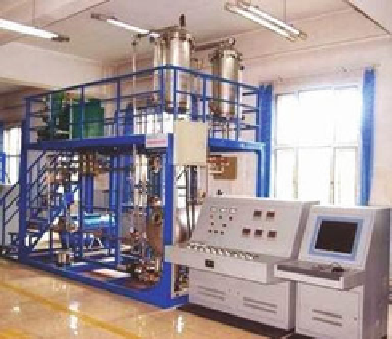Environmental Engineering Reference
In-Depth Information
Fig. 4.3 Instrument of
sodium nitrite replacement
method to produce
nitromethane
4.3.1.5 Toxicity of Nitromethane
Nitromethane is a volatile liquid with high toxicity; its vapor has stimulating effects
on the lungs, long-term exposure to it can result in decreased appetite, nausea and
diarrhea with damage on liver and kidney. The maximum allowable concentration
is 250 mg/m
3
,50
200 ppm. Experimental results on rats show that the lethal dose is
1.44 g/kg (body weight), the allowed nitromethane concentration in the workplace
air is 100 ppm. In the place with high concentration of nitromethane, activated
carbon can not be used as adsorbents to adsorb nitromethane, because the
adsorption heat is large and it may cause a
-
fire. Good safety protective equipments
should be used during the nitromethane production process, for example, chemical
safety goggles can be worn to protect the eyes, and wearing gas masks can avoid
inhalation. Workplace should also have good ventilation.
4.3.1.6 Storage and Transportation of Nitromethane
Nitromethane should be stored in a cool and ventilated place, isolated from oxi-
dants, can not be stored in hazardous area with ignition,
fire or easily oxidized
materials, and be suitable to store at low temperature; it should be stored and
transported according to the standard of toxic and
fl
flammable materials.
4.3.2 Properties and Preparation of Dinitromethane
4.3.2.1 Properties of Dinitromethane [
23
]
Formula: CH
2
N
2
O
4
NO
2
Structure:
H
C
NO
2




